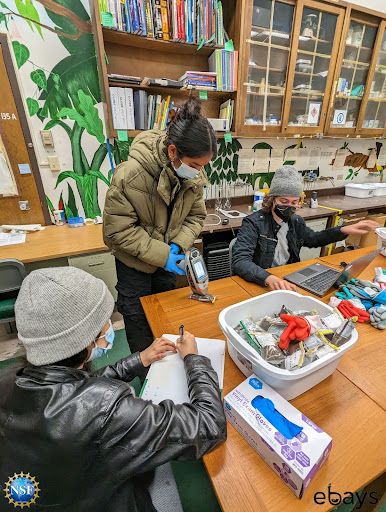Lead is a type of heavy metal that is used almost everywhere. It is common to use lead because it is easy and soft to work with, resists corrosion, does not melt easily, and can be molded into almost anything while maintaining its durability. Because of these qualities, it is widely found in car batteries, cosmetic products, pigments, and more. However, lead from pipes, paint, gasoline, and manufacturing areas can contaminate our soil. This becomes a problem because frequent exposure to lead can cause complications to our health. Lead can enter our body by being inhaled, ingested, or absorbed through our skin. Excessive lead exposure can have irreversible damage to the human body. It is especially harmful to children because it can replace calcium in their body and impair their brain development. Additionally, there are countless studies that reveal how lead exposure is also linked to environmental injustice and racism in our community.
Being part of The East Bay Academy for Young Scientists (EBAYS) Internship gave me the opportunity to collect, test, and analyze soil samples around our houses, schools, and neighboring communities. The goal was to determine what types of heavy metals can be found, how it can affect people, and to use our findings to create a project that aims to spread awareness, promote prevention and safety. Each intern in the program collected topsoil and depth soil in various areas around Oakland and, with the use of the XRF technology, determined if the levels of heavy metals were above the state’s safety standards. A soil sample taken from Oakland Technical High School and Piedmont Elementary School revealed high levels of lead, something that is not ideal, especially in a setting where many young people spend a lot of time. Another observation was that certain lower income neighborhoods contain higher levels of lead compared to areas where there is more funding. Since lower income households are most likely to occupy older homes that contain hazards such as lead, they tend to experience more negative effects from this. This is where redlining comes in. The segregation caused by redlining placed minority groups in underdeveloped neighborhoods that tend to lack funding and access to healthcare. Consequently, this contributes to their occupants’ shorter life expectancy and a further perpetuation of inequity. Prioritizing the health of our community and environment against lead poisoning is crucial. Lessening our exposure to lead is the key to lifelong good health, especially for kids. Wearing Personal Protective Equipment (PPE) when digging, washing your hands, sweeping, and mopping are ways we can reduce the risks of lead poisoning. Paying close attention to kids when playing outdoors and getting their blood levels tested can help monitor exposure. Getting your soil tested is equally important as well. EBAYS provides free soil testing services. If you’re interested in knowing if your soil is contaminated, send an email to ebays.lhs@gmail.com. Healthy Homes and ACHD are also helpful resources that support our community’s health through lead prevention services. Spreading awareness of this issue to the public is an important step to building a more inclusive and sustainable community.
